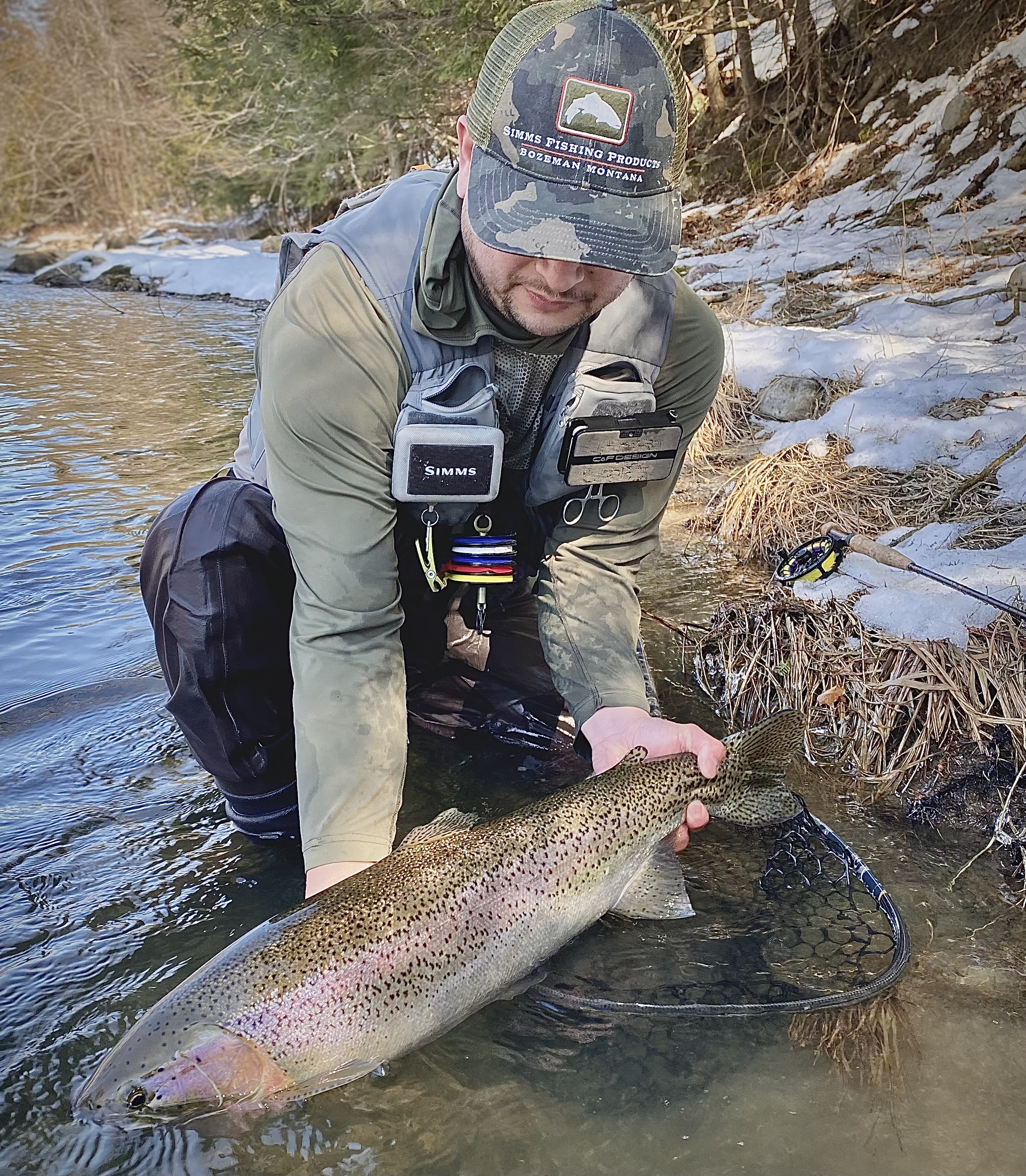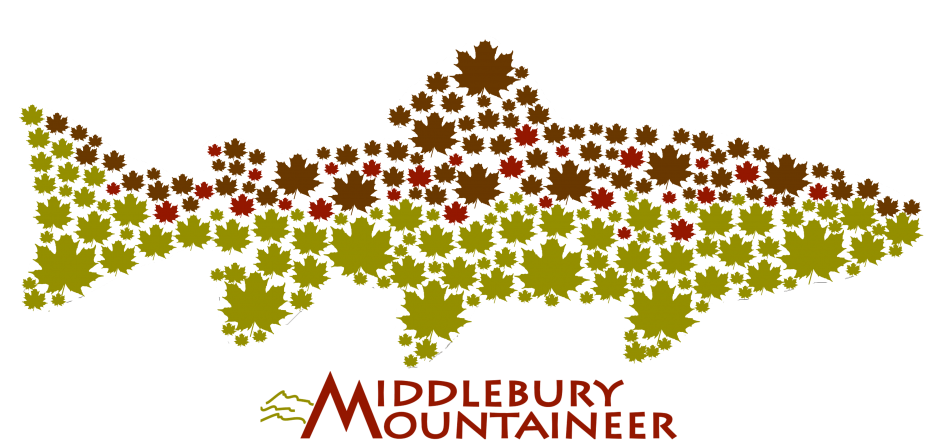Fishing Report 3/27/23

The 15th Annual Otter Creek Classic is just a few weeks away. Make sure you get your tickets for the International Fly Fishing Film Festival at Town Hall Theater on April 14th as well. More information at:
https://mmvt.com/fishing/otter-creek-classic
Spring yo-yo water conditions have begun. This is a great to see as an annual rite of spring. Snow is clearing from the valley pretty good now, but there is still healthy snowpack in the mountains. If we are lucky, that should slowly leak off keeping water at good levels and cold well through the spring months and allow for the best spring fishing we have had in a few years. For the first time in a few years we are completely out of drought conditions at this time of the year. The weather over the coming weeks will play a huge role in what the fishing conditions will be.
We are seeing the daily jumps on the high gradient rivers and Otter Creek tribs and the Otter has started its climb up past 2k cfs. Barring a cold snap, this will keep the Otter above 2k for at least 4 weeks. While the water may be high, the Otter can still start producing good fish through this. The clarity is the key. More on tactics for fishing runoff below.
If you like fishing the bigger water, the White will offer more fluctuation in water levels, as the central mountains send it’s snow pack. The nature of the high gradient and cooler temps will find the White bouncing up and down with snow melt, but more frequently dropping down after cold nights. It’s already been up to 3k cfs but at the time of this report has dropped below 2k cfs. The water will clear some during these drops and if you catch it right you can get better clarity there then the Otter.
The Otter Creek Tribs will probably offer some of the best water conditions over the next week or two, in between high-water events after warm days or rain. Once the valley clears completely of its snow, with days starting to reach the high 40’s to low 50’s, you can expect the fishing to really start picking up despite the snowpack in the mountains. Given the forecast shows almost all nights in the mountains getting back below freezing the tribs will likely flash runoff in the afternoon and through the evening and drop down for the morning to midday hours. The New Haven River USGS gauge is always a good indication of what is happening on all the Otter Creek tribs. Tribs like the Middlebury and Neshobe with smaller watersheds will amplify these more, where the New Haven and Furnace do drain larger areas. You’ll likely find the warmest water on the New Haven as it has the longest stretch between the foot of the mountains to the Otter. Muddy Branch will be wreaking havoc on Dog team until all of the snow clears the valley, but it can also add warmer water so if there is some decent visibility below the confluence, it can be worth a stop.
With water conditions being what they are and clarity, levels and temps playing a role in the fishing quality, its important to maximize your opportunities by focusing on the best holding water. With levels up, but water temps still cooler, the fish need to get out of the way because they will still not quite be aggressively feeding as they do once runoff subsides. Trout will typically do one of 2 things. Get under the heavy flow or get out of the way towards the bank and soft edges. They cannot yet justify hanging our in the heavy current despite the increase food in the water column. Deeper drop offs and runs can allow the trout to have the main push of the current push over the top of them and allow food to drop out of the bottom. Another place is the inside of river bends where the water pushes to the outside. I can think of a few locations in the Middlebury area where I would pick fish up this time of the year where I would be standing to fish the main current a month from now. This can change some if we get a drop in levels or improved clarity. But its aways worth some drifts through the slowest water before you move in.
Given the typical holding location of trout for the coming weeks, and also the water levels and speed, getting the fly weight correct will be key. Whether nymphing, stripping or swinging streamers those fish will be deep or on the banks. This time of the year can be a bit rough on the fly box as anglers start clearing out the snags and debris that have accumulated during the winter and are being deposited during runoff. So, on top of making sure you have the correct weighted flies, split shot, sinking leaders, make sure you have enough of your favorite spring patterns should you sacrifice a few to the river. Runoff starts pushing around the river substrate and erodes some of the banks. This will start to push an assortment of bugs around. While you can expect that caddis larvae and mayfly nymphs are occasionally prevalent, it’s the larger food items that will get the most action. Both live and bead bait fish, stonefly nymphs, hellgrammites, and larger mayfly nymphs are easier for the trout to see and worth more of their effort. That isn’t to say you won’t find a day with lower water and some small stonefly and midge hatches that fish could key in on nymphs and elusive dry, but most fish will be caught on your larger subsurface fly patterns for the coming weeks. If nymphing I am typically using a stonefly pattern to get the rig down and switching through larger mayfly and larvae patterns as the second fly. Streamers can be extremely effective, whether swung, stripped or even deadrifted. Variations of white streamers have consistently been the winner during the spring for us. I usually go with a larger streamer when stripping, but choose to run smaller patterns when swinging or dead drifting. The shop has plenty of great options for early season fly selection, so swing by and find out what has been working the best.
